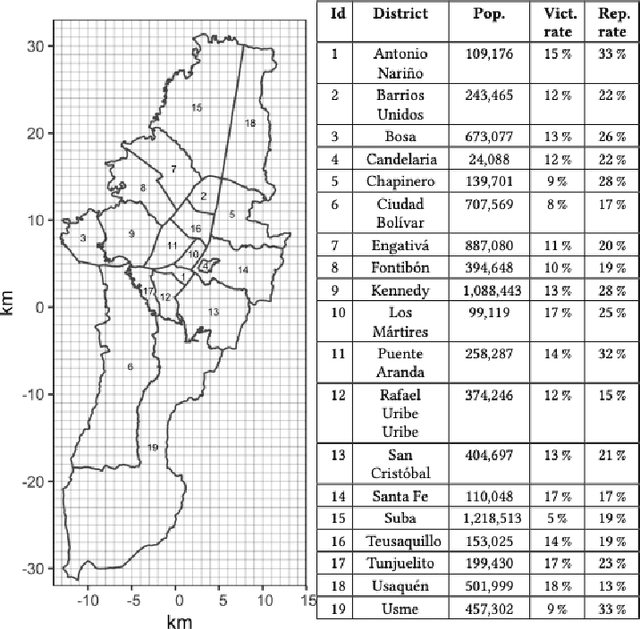Likelihood-Free Estimation for Spatiotemporal Hawkes processes with missing data and application to predictive policing
Paper and Code
Feb 10, 2025



With the growing use of AI technology, many police departments use forecasting software to predict probable crime hotspots and allocate patrolling resources effectively for crime prevention. The clustered nature of crime data makes self-exciting Hawkes processes a popular modeling choice. However, one significant challenge in fitting such models is the inherent missingness in crime data due to non-reporting, which can bias the estimated parameters of the predictive model, leading to inaccurate downstream hotspot forecasts, often resulting in over or under-policing in various communities, especially the vulnerable ones. Our work introduces a Wasserstein Generative Adversarial Networks (WGAN) driven likelihood-free approach to account for unreported crimes in Spatiotemporal Hawkes models. We demonstrate through empirical analysis how this methodology improves the accuracy of parametric estimation in the presence of data missingness, leading to more reliable and efficient policing strategies.
 Add to Chrome
Add to Chrome Add to Firefox
Add to Firefox Add to Edge
Add to Edge